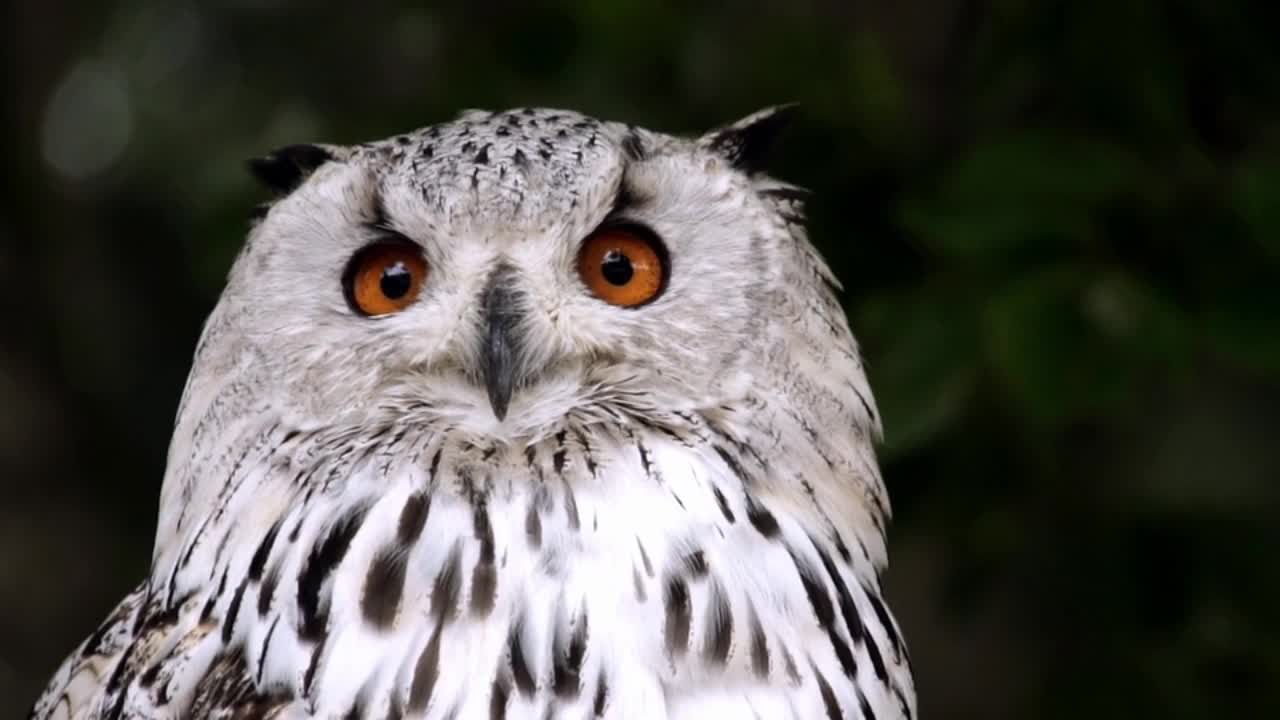Premium Only Content

Watch a Very Close View of a Beautiful Owl
Owls are birds from the request Strigiformes, which incorporates more than 200 types of generally lone and nighttime flying predators encapsulated by an upstanding position, a huge, expansive head, binocular vision, binaural hearing, sharp claws, and plumes adjusted for quiet flight. Special cases incorporate the diurnal northern bird of prey owl and the gregarious tunneling owl.
Owls chase generally little well evolved creatures, bugs, and different birds, albeit a couple of animal varieties have some expertise in chasing fish. They are found in all districts of the Earth aside from the polar ice covers and some far off islands.
A gathering of owls is known as a "parliament."
Owls are separated into two families: the valid (or normal) owl family, Strigidae, and the stable owl family, Tytonidae.
Owls have huge, front oriented eyes and ear-openings, a falcon like nose, a level face, and normally a prominent circle of plumes, a facial plate, around each eye. The quills making up this circle can be acclimated to pointedly center sounds from fluctuating distances onto the owls' lopsidedly positioned ear holes. Most flying predators have eyes on the sides of their heads, yet the stereoscopic idea of the owl's front oriented eyes allows the more prominent feeling of profundity discernment fundamental for low-light chasing. Despite the fact that owls have binocular vision, their enormous eyes are fixed in their attachments—just like those of most different birds—so they should blow some people's minds to change sees. As owls are farsighted, they can't obviously see anything inside a couple of centimeters of their eyes. Gotten prey can be felt by owls with the utilization of filoplumes—hairlike plumes on the bill and feet that go about as "sensors". Their far vision, especially in low light, is incredibly acceptable.
Owls can pivot their heads and necks as much as 270°. Owls have 14 neck vertebrae contrasted with seven in people, which makes their necks more adaptable. They likewise have transformations to their circulatory frameworks, allowing revolution without removing blood to the mind: the foramina in their vertebrae through which the vertebral corridors pass are around multiple times the distance across of the vein, rather than about a similar size as the conduit as in people; the vertebral courses enter the cervical vertebrae higher than in different birds, giving the vessels a little room to breath, and the carotid corridors join in a huge anastomosis or intersection, the biggest of any bird's, forestalling blood supply from being cut off while they pivot their necks. Different anastomoses between the carotid and vertebral conduits support this impact.
-
 1:21:53
1:21:53
Man in America
15 hours agoInflation, Debt & War: The 2032 Crash Cycle Is Here—Nations Will FALL w/ Martin Armstrong
39.9K19 -
 1:53:48
1:53:48
Adam Does Movies
14 hours ago $2.37 earnedTalking Movies + Ask Me Anything - LIVE
16.2K2 -
 2:55:43
2:55:43
TimcastIRL
6 hours agoTrump DOJ To Ban Trans People From Owning Guns After Catholic School Shooting | Timcast IRL
181K105 -
 3:21:36
3:21:36
The Quartering
6 hours agoBaldur's Gate 3 First Playthrough!
41.6K6 -
 6:34:42
6:34:42
Rallied
8 hours ago $7.39 earnedWarzone Solo Challenges
76.1K2 -
 57:40
57:40
MattMorseTV
7 hours ago $10.91 earned🔴Trump just SHATTERED the RECORD.🔴
54.2K90 -
 43:39
43:39
WickedVirtue
5 hours agoLate Night Spooky Plays
29.9K2 -
 2:04:02
2:04:02
Glenn Greenwald
8 hours agoTrump and Rubio Apply Panama Regime Change Playbook to Venezuela; Michael Tracey is Kicked-Out of Epstein Press Conference; RFK Senate Hearing | SYSTEM UPDATE #508
111K135 -
 58:36
58:36
Total Horse Channel
10 hours ago2025 CSI3* A Coruña Porsche - Grand Prix
28.3K -
 2:10:32
2:10:32
megimu32
6 hours agoOTS: Mighty Morphin Power Rangers & the 90s Movie That Defined a Generation
25.3K12